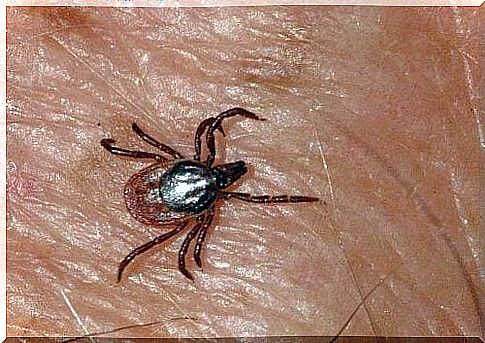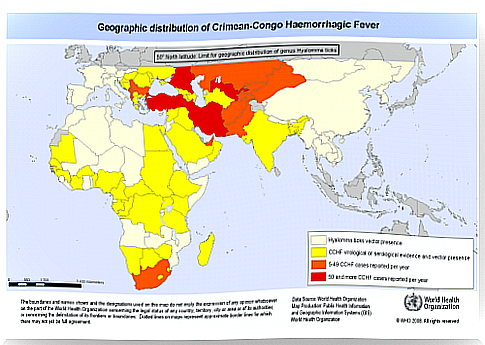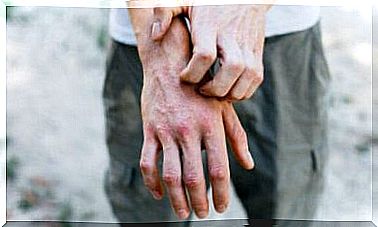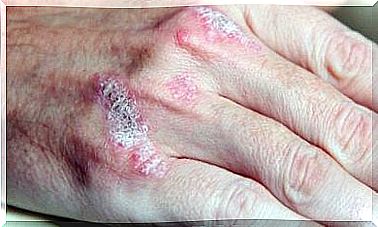Cases Of Crimean-Congo Hemorrhagic Fever Have Been Found In Spain

On August 25, 2016, a 62-year-old man from Madrid, Spain died of Crimean-Congo hemorrhagic fever (CCHF). This has caused the alarm bells to ring.
The news reached the media and suddenly the Spaniards discovered a disease almost no one had heard of.
That said, keep in mind that Crimean-Congo hemorrhagic fever is not new. In fact, it has appeared in Spain before.
At present, another person has contracted this disease: the nurse who cared for the 62-year-old patient is now in critical condition. Furthermore, the nurse is now isolated. In fact, she is in a special unit that is best equipped to treat this infectious disease that is spread by ticks.
. Although many have compared this disease to Ebola, there is no reason to come to this unjustified conclusion.
First, and for the peace of the Spaniards, they must remember that one thing has nothing to do with the other. In these cases, the most important thing is to have all the information available to know what to expect.
Below we will provide the most relevant information about Crimean Congo hemorrhagic fever if it spreads to other places such as USA.
What is Crimean-Congo hemorrhagic fever?
The World Heath Organization (WHO) defines this disease as a type of viral hemorrhagic fever that has a mortality rate of up to 40%.

We know the following details about Crimean-Congo hemorrhagic fever:
- It is a type of virus that originates from the Bunyavirus family.
- It is spread by forest ticks, mosquitoes, rodents and also through direct contact with infected animals.
- It is transmitted between people when there is direct contact with the blood, body secretions or other body fluids from the infected person.
This fact explains why the nurse who took care of the infected patient got this virus.
Crimean-Congo hemorrhagic fever is an epidemic in Africa, the Balkans, the Middle East and Asia.
It is common in countries below 50 degrees north latitude.
What are the symptoms of this disease?
- After this, the infected individual begins to experience fatigue, muscle aches, headaches, dizziness, neck stiffness and photosensitivity.
- Other symptoms are liver and splenic swelling (hepatomegaly), which also includes swelling of the lymph nodes, bleeding, a high temperature and confusion.
As we have mentioned before, the mortality rate of Crimean Congo hemorrhagic fever is around 40%. Many patients die in the second week after contracting this disease, but those who get better already show positive signs of improvement by the 9th day.
Unfortunately, there is currently no vaccine against this disease. Yet there are very few cases where this disease develops fully.

Should I be worried?
The short answer is no. As experts have told us, Crimean-Congo hemorrhagic fever is not easy to transmit. Moreover, this is not its first entry into countries like Spain.
- For example, in 2011, the pathogen present in this disease was found in a population of deer in Cáceres, Spain.
- In addition, we must keep in mind that this virus only fully develops in humans and not in animals. Therefore, we do not see any visible symptoms in animals such as deer, cows, pigs, rats, etc.
- This is why the group of people who are most at risk of contracting this disease are those who work in direct contact with animals.
- Nevertheless, there is veterinary control on farms and therefore it is not common for this virus to spread far.
In fact, none of us are often in direct contact with bodily secretions and excreta. However, health professionals and farmers as well as slaughterhouse workers are undoubtedly at a higher risk stage of contracting this disease.
In conclusion, we must remain calm and simply stay informed about Crimean-Congo hemorrhagic fever.
How did this virus reach Spain?
Medical professionals from Hospital Carlos III in Madrid, the same hospital that treats the infected nurse, say that viruses are already a daily risk factor that we face.
F as we live in an environment where pathogens and infectious agents from other countries can easily move.

However, medical authorities have prepared well for Crimean-Congo hemorrhagic fever.
For example, they have currently followed all protocols and have put the 190 people who may have been in contact with the infected patient for examination.
Can Crimean-Congo hemorrhagic fever be treated?
As we pointed out at the beginning, there is no vaccine against this virus. However, it can be treated.
- Doctors use ribavirin to treat the infection, and the results have been extremely satisfactory so far.
Finally, it is important to point out that the patient mentioned at the beginning of this article may have died due to a previous state of health or a very weak immune system.
As far as we are concerned, you should remain calm and informed.









